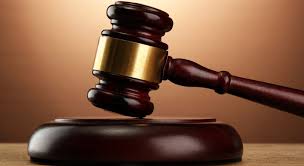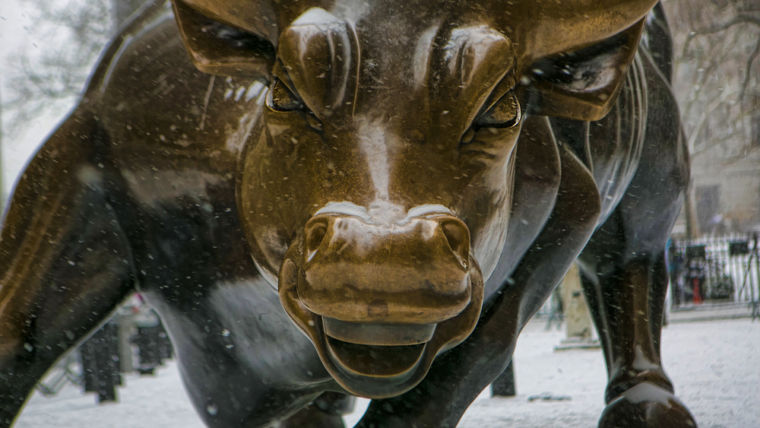Here is another example of how our youth are standing up and advocating for their own future. There are several lawsuits that may seem problematic and far fetched at first but are gaining traction in court. Each one continues to move forward step by step.
At their core, they are based on the constitutional right of children to have a planet and climate that provide them a life with clean air and water and is not a threat from extreme weather events such as fire and storms.
“Olson and her team ground their case on the notion that climate safety is an inherent protection laid out in the Constitution.
“It’s tantamount to saying that there is a constitutional or natural right for the public to have their government protect them from catastrophic change,” said Brad Campbell, president of the Conservation Law Foundation.
People fought for and courts established civil, social and marriage rights before they were legally enshrined. The same pattern could apply to climate rights, Campbell said. “This case is poised to establish a similarly transformative duty if these plaintiffs prevail.””
“Barrett is one of 21 young plaintiffs suing the government in a landmark climate change case, Juliana v. United States, arguing that administration after administration eroded their rights protected under the Constitution by allowing and at times encouraging the extraction and burning of fossil fuels for decades, despite the fact that federal agencies knew of climate change as early as the Johnson administration.”
These Kids Envision Looming Climate Havoc. So They’re Suing
When Victoria Barrett, an 18-year-old freshman at the University of Wisconsin, Madison, is approaching middle age, the world stands to be hotter, more crowded and increasingly storm-battered.
Scientific projections are grim. Earth will look different, and plants and animals will occupy significantly altered ecosystems. Fires will abound, but water will not. Rising tides will carve out new boundaries for the coastal metropolises of today. And drought, famine and human diaspora are expected to be commonplace.
“It’s kind of sad to know that we really likely are going to have to live in a world that is really physically different from the world we live in now,” Barrett, who is studying political science and environmental studies, said by phone.
Barrett is one of 21 young plaintiffs suing the government in a landmark climate change case, Juliana v. United States, arguing that administration after administration eroded their rights protected under the Constitution by allowing and at times encouraging the extraction and burning of fossil fuels for decades, despite the fact that federal agencies knew of climate change as early as the Johnson administration.
But instead of building their case by pointing to past destruction, as plaintiffs in environmental lawsuits often do, Barrett and her colleagues mounted a pillar of their case on current and future damages — specifically the havoc climate change is wreaking now and will for centuries to come.
“They’re alleging that damages are occurring now,” Holly Doremus, a professor of environmental law at the University of California, Berkeley, said in an interview. “It’s different. It’s exciting.”
The plaintiffs are suing to secure a court declaration that the government violated their rights and to wrestle the U.S. government into creating a strategy to phase out fossil fuels within its borders (Climatewire, April 28, 2017).
During a recent sharp exchange with federal Judge Alex Kozinski, who heard a government appeal to block the suit, Julia Olson, an attorney for the plaintiffs, said her clients stand to lose more than older generations.
“They will live far longer than you,” Olson told Kozinski. “They will live to late in the century, when the seas are projected by these federal defendants to be 10 feet higher.” Kozinski has since resigned over sexual misconduct allegations.
Sea-level rise will continue through 2200 and increase the frequency and reach of extreme floods connected to coastal storms, such as hurricanes and nor’easters, according to the Climate Science Special Report, a government study meant to be the “authoritative assessment” of climate science specific to the United States.
In 40 years, when the plaintiffs are in their 50s and 60s, climate damages will be easy to notice, said Michael Oppenheimer, a professor of geosciences and international affairs at Princeton University.
“Visually a lot changes,” Oppenheimer said. “Rich people and rich countries will be able to defend themselves to some extent,” he added. “If we don’t bring this under control, the whole world has problems with food.”
As the world warms, the risk of wildfires climbs, wildlife will move from their habitats and coral reefs continue to die, he said. “It’s really a mess already, and that’s just going to get worse.”
States that border the Gulf of Mexico will look starkly different. “It’s essentially going to disappear, many beaches and wetlands,” he said.
The plaintiffs requested reams of documents from Cabinet agencies, and dozens of experts are expected to testify.
Two federal scientists deposed last year said the planet is in a treacherous state, due to rising greenhouse gas emissions (Greenwire, Aug. 29, 2017).
Michael Kuperberg of the Office of Science and Technology Policy said rising emissions put the United States in a “danger zone,” and NOAA scientist Mark Eakin said climate change has created an “emergency situation” among the world’s coral reefs.
During the Obama administration, government lawyers said in court papers the United States is responsible for more than one-quarter of all carbon dioxide released globally between 1850 and 2012 (Climatewire, Jan. 18, 2017).
This month, the 9th U.S. Circuit Court of Appeals rejected the Trump administration’s bid to halt the lawsuit. That paves the way for a trial that could begin as early as this year in the U.S. District Court for the District of Oregon.
‘Trial of the Century’
The case is novel in part because of its high stakes: If successful, the plaintiffs could require an overhaul of the American energy system.
“I think the plaintiffs here would argue that the scope of the harm requires that,” said Sean Hecht, an environmental law professor at the UCLA School of Law. “I don’t think that I’ve seen another case that has the scope that this has,” he said. “But just because it’s unusual in scope doesn’t mean that the courts can’t handle it.”
Citizens abroad petitioned their governments with similar arguments.
In India, 9-year-old girl Ridhima Pandey sued the country in 2017, charging that it broke its responsibility to protect the environment for the public and generations to come. In Pakistan, a young girl, Rabab Ali, sued her government, saying it was not doing enough to address climate change. And a New Zealand law student, Sarah Thomson, sued her government to increase its climate targets, but she lost in court in November (Climatewire, March 31, 2017).
The Trump administration is working to get the case dismissed.
“[The] plaintiffs are making meritless claims,” Eric Grant, representing the government, said at a hearing in San Francisco, adding that the case is “distracting” the White House from its duties. “This court is on a collision course with the executive branch.”
Those behind the lawsuit, organized by the group Our Children’s Trust, are not coy about their goals or stakes: The “Trial of the Century,” they call it.
Still, there’s never been a case like it in American history.
It differs from American Electric Power Co. v. Connecticut, which pitted a group of states against utility companies. It also differs from Massachusetts v. Environmental Protection Agency, a case in which a separate group of states successfully argued for the agency to regulate heat-trapping gases. And it differs from Kivalina v. Exxon Mobil Corp., in which plaintiffs demanded payment for climate damages.
Unlike attorneys in those suits, Olson and her team ground their case on the notion that climate safety is an inherent protection laid out in the Constitution.
“It’s tantamount to saying that there is a constitutional or natural right for the public to have their government protect them from catastrophic change,” said Brad Campbell, president of the Conservation Law Foundation.
People fought for and courts established civil, social and marriage rights before they were legally enshrined. The same pattern could apply to climate rights, Campbell said. “This case is poised to establish a similarly transformative duty if these plaintiffs prevail.”
Kevin Trenberth, a climate expert at the National Center for Atmospheric Research, is slated to testify at trial, and he prepared remarks based on each plaintiff. “I’ve looked at their locations — where they live,” he said.
Asked what the world will resemble when the kids are adults, Trenberth underscored water shortages and displaced people.
“You’re really going into a whole different society where war is common,” Trenberth said. “In a lot of countries, the people may not be able to leave or leave readily,” he said. “A lot of people think this is much more benign than I think it will be.”
Barrett marched in downtown Madison last week to protest gun violence. She views climate through a lens of political leadership — or lack thereof.
In conversation, rather than focusing on how the Earth will look different four or five decades from now, Barrett zeroed in on how politicians could have cooled down a warming planet.
“At the end of the day, it comes back to who to hold accountable,” she said. “It’s all about the society that we’re shaping.”
She added, “It really makes you wonder if they cared what the world would look like.”



